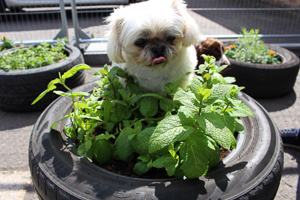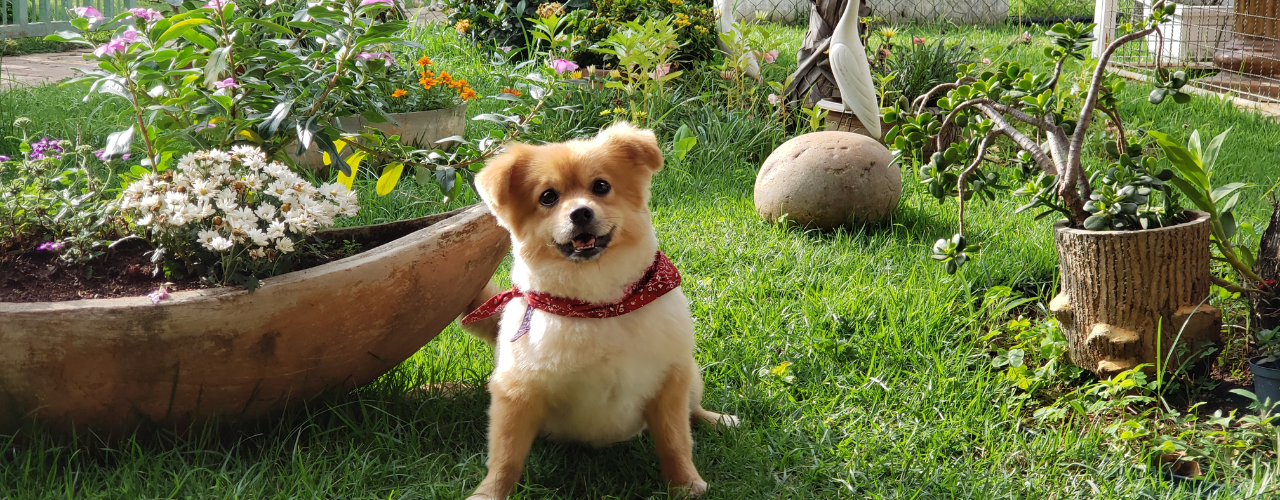The sensory garden at Rags & Bert's plays a really important part in enriching the lives of the dogs who come to play with us.
We've added specific plants and features in order to stimulate the dog’s brain, activate his natural canine instincts, and build his confidence. As well as tantalising all their senses, our sensory gardens encourage dogs to interact with their surroundings and provide physical and mental challenges.

If you'd like to create a sensory garden at home then here are some ideas to get you started:
- Play: Put a paddling pool in your garden and fill it up with water. This is perfect for your dog to cool off in. Bonus point if you add any of their favourite waterproof toys! Most dogs really enjoy this, especially over summer!
- Hear: Tie a chime to the branch of a tree in your garden for a zen atmosphere for your pet.
- Feel: Place some cushions on the ground for your dog to walk on and experience a variety of textures. You can also try making a game of it: help your dog to jump over all the cushions for more exercise.
- Dig: If you have a sandpit or a patch in your garden that is ‘for dogs only’ you can hide a toy for him to dig out. You need to be certain that your dog will know the difference between the sand pit or ‘dog-only area’ and the rest of your garden - we don’t want your dog digging up your flower beds!
- Taste: Rather than feeding your dog from a bowl, try throwing dry food in a patch of garden where you let the grass grow longer. This creates a tasty game of hide-and-seek! Be sure not to give them extra food though.
- Sniff: Plant some dog-friendly and medical flowers to sniff or eat. Here are some examples of commonly used plants.
- Birch — known to help with muscular and inflammatory pain.
- Catnip — good for its relaxing properties and stimulates playfulness in dogs.
- Lavender — known to encourage scar tissue regeneration.
- Marigold — often selected by animals experiencing grief or emotional distress.
- Meadowsweet — often selected by animals with digestive problems, arthritis and rheumatic conditions.
- Peppermint — good for its cooling properties and often chosen by animals with skin irritations. It can also be offered as an aid for training.
- Valerian — often chosen by anxious dogs for its calming effect.
- Wheat grass — animals who are nervous, anxious or exhibit hyper behaviours often select wheat grass.
- Willow — animals in pain will often go for willow bark.
Adding a few of these little extras will help ensure your dog doesn't get bored over the summer, making the garden a fun, outdoor space for the whole family.
